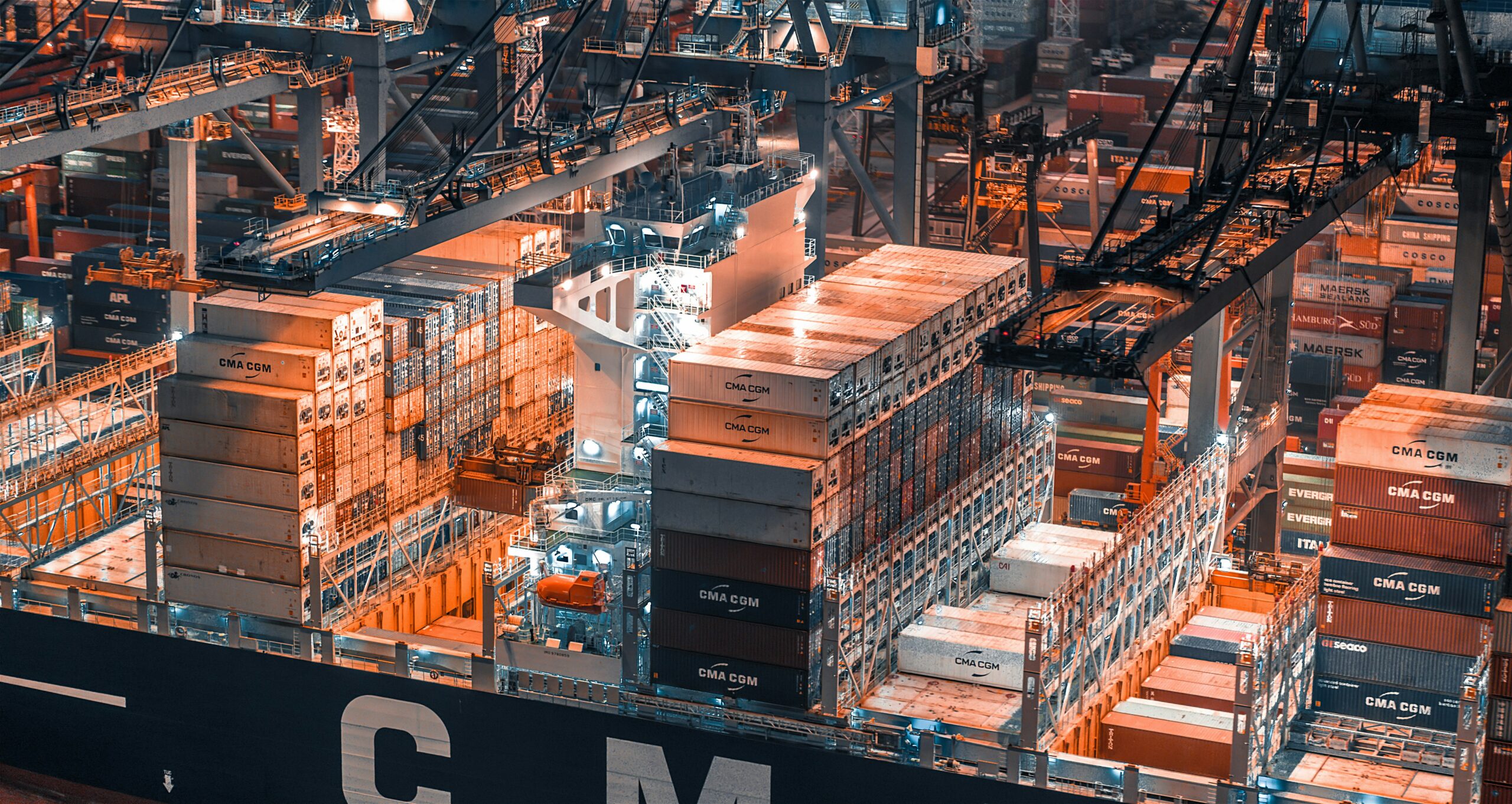The state of warehouse market in Germany 2025
Written by
Kinga EdwardsPublished on
Uncover key insights into Germany’s warehouse market in 2025. Stay informed on trends, challenges, and opportunities in this evolving sector.

The warehouse market in Germany is entering a complex yet promising phase in 2025. While the sector remains a pillar of Europe’s e-commerce logistics, businesses face rising rental costs, supply shortages, and shifting demand patterns. At the same time, sustainability, automation, and flexible warehousing solutions are opening new opportunities.
Drawing on waredock. and BNP Paribas Real Estate data, this report explores the key trends, challenges, and investment prospects shaping the German warehouse landscape.
Want to check what’s inside?
Warehouse market in Germany: the overview
The German warehouse market saw a mixed performance in 2024. Warehouse take-up totaled 5.3 million sqm, marking a 16% drop from 2023 and 24% below the ten-year average. Despite a slow start, demand stabilized in the latter half of the year. Large-scale warehouse deals over 20,000 sqm were noticeably absent, and this signals a shift toward smaller, more flexible spaces.
Regions
Here’s how key regions of the warehouse market in Germany performed heading into 2025:
- Berlin saw a decline in take-up, which reflects the city’s high rental costs and limited availability. However, upcoming construction projects in 2025 could help ease supply constraints.
- Cologne saw a strong year, with warehouse take-up jumping by over 60%. It’s now one of the few cities performing well above the 10-year average.
- Düsseldorf also beat expectations, growing by 8.2% and ranking second among the top logistics hubs. It’s becoming a key location for steady, long-term demand.
- Frankfurt, on the other hand, experienced a decline in warehouse demand, fueled by logistics and distribution companies. It recorded the highest take-up.
- Hamburg recorded 260,000 sqm of take-up – slightly below last year (-4.4%) but still holding strong. The city remains an important player thanks to its port and infrastructure.
- Leipzig struggled in 2024, with take-up falling over 30%. But with lower rents and solid transport links, it still holds potential for growth.
- In Munich, rents continue to rise, yet the city remains a key hub due to its strategic location and strong economic base.
- The Ruhr area ended 2024 with a notable drop, down nearly 28%. Still, its central location and lower costs make it a region to watch.
But where are the biggest opportunities for this year?
Here, the Ruhr Area and Leipzig are gaining traction as affordable alternatives. Thus, businesses seeking lower costs and growing demand are increasingly considering these secondary markets as viable logistics hubs.
Sectors
Manufacturing led the way in 2024, accounting for 36.8% of total warehouse take-up – the highest among all sectors. It’s a result of consolidation, changes across the sector, and major developments in automotive logistics. Just take, for example, BMW’s 150,000 sqm battery plant in Straßkirchen and Mercedes-Benz’s 100,000 sqm hub in Bischweier.
Logistics firms followed with 29.6%, although their true activity was likely higher, as many used existing capacity before signing new leases. Retail also made a comeback, reaching 25.8%, with large-scale deals from Nordwest Handel, Fressnapf, and Lidl – all above 60,000 sqm. As for pricing, prime rents rose modestly by an average of 2%.
Munich remains the most expensive logistics market at €10.50/sqm, while Düsseldorf showed the strongest rent growth, climbing 8% to €8.50/sqm. Berlin and Frankfurt followed closely, with prime rents reaching €8.20 and €7.95/sqm, showing quite a steady demand in both cities. At the other end, Leipzig and the Ruhr region offered more affordable options, with prime rents at €5.90 and €7.60/sqm. They attract businesses looking for cost-effective logistics space.
We can see a balance of rising demand, sector shifts, and stable rent growth sets the tone for a competitive (but opportunity-filled) 2025 in Germany’s warehouse landscape.
Key trends shaping the warehouse market in 2025
So, what’s really changing in the warehouse market in Germany this year? A lot more than you might think. From smarter tech to tighter space, the market’s shifting fast. And it’s not slowing down anytime soon.
Rising rental costs and supply constraints
Warehouse rents in Germany’s major cities are climbing due to high demand and limited availability. In Munich, prime rents reached €10.70 per sqm per month for large spaces, while Berlin and Hamburg saw prices rise to €8.50 per sqm.
Take notes:
- That pattern’s likely to stick around in 2025, which means rental prices will stay top of mind when businesses are picking warehouse spots.
- With new construction lagging behind demand, companies are turning to alternative solutions such as shared warehouse spaces and repurposing older industrial sites.
- Logistics providers are also seeking smaller urban hubs to meet the growing need for last-mile delivery infrastructure.
Demand for smaller, flexible warehouses
More companies are looking for units under 3,000 sqm, especially in sectors like e-commerce, retail, and pharma. Being closer to city centers is a big plus – it speeds up delivery times and keeps supply chains more agile. And since space in urban areas is tight, modular and multi-tenant warehouses are gaining traction. They give businesses room to grow without locking them into massive, expensive facilities.
Remember:
- Smaller spaces near city centers are in high demand, especially from FMCG sectors.
- Speed and flexibility are driving location choices.
- Modular and shared warehouses are gaining traction as scalable, cost-conscious options.
Sustainability and the push for green logistics
Companies are prioritizing green-certified warehouses, energy-efficient buildings, and solar-powered logistics centers. It’s not just about cutting emissions. These buildings help reduce operating costs and attract tenants who are willing to pay more for eco-friendly space.
The European Union’s Green Deal is accelerating this shift, requiring logistics operators to cut emissions and invest in eco-friendly transport solutions.
Keep in mind:
- By 2025, demand for carbon-neutral warehouses will be stronger than ever.
- Tenants are willing to pay more for sustainable spaces, especially in high-demand urban areas.
- Green buildings are also helping companies hit their ESG targets – something investors and partners are watching closely.
Technology and automation in warehousing
Advancements in automation, AI, IoT, and technology overall are transforming how warehouses operate. Companies are investing in Warehouse Management Systems (WMS) to optimize inventory, reduce errors, and boost efficiency. Robotics and AI-driven sorting systems are making warehouses faster and more cost-effective.
With Industry 4.0 on the rise, more logistics hubs are integrating real-time data analytics and predictive maintenance technologies, allowing companies to streamline operations and minimize downtime.
Take into account:
- WMS platforms are helping businesses manage stock more accurately and improve day-to-day operations.
- Robotics and AI are speeding up order processing while lowering long-term labor costs.
- Predictive maintenance is reducing equipment failures and costly disruptions.
Challenges in warehouse development and supply
As we know now, Germany faces a serious supply issue in warehouse space. Zoning restrictions, high land prices, economic uncertainty, and a cautious approach from occupiers (particularly in major cities like Berlin, Munich, and Frankfurt) are slowing new developments, leaving many businesses scrambling for available space.
The shortage is especially pronounced in prime urban locations, where high land prices and stringent zoning regulations hinder new developments.
Spaces under 3,000 square meters are particularly in demand, but E&V highlights a bigger number, namely spaces under 5,000 square meters. Such spaces accounted for around half of the total transaction volume in 2024. This imbalance is pushing businesses to explore secondary markets or adopt innovative solutions such as automated micro-fulfilment and shared logistics hubs to fulfill their operational needs.
Economic pressures further complicate the landscape. The German machine tool industry anticipates a significant production decline in 2025. This downturn prompts companies to reassess expansion plans. It also led to prolonged lease negotiations and a decrease in large-scale contracts, thereby exacerbating the supply-demand imbalance in the warehouse sector.
Opportunities for investors and businesses
As the global economic landscape continues to evolve, driven by technological advancements and shifting consumer preferences, numerous opportunities are emerging for both investors and businesses. Here are some key areas to consider:
Growth potential in secondary markets
While Berlin, Munich, and Frankfurt remain the top choices for logistics, the Ruhr Area and Leipzig are emerging as cost-effective alternatives. These regions offer lower rents, growing demand, and expanding infrastructure, making them attractive for businesses looking to reduce costs without compromising on logistics efficiency.
For instance, setting up logistics hubs in secondary markets can reduce transit times and transportation costs. As a result, they can benefit businesses that need to serve both primary and secondary markets efficiently.
Investing in sustainable and smart warehouses
Warehouses with green certifications, smart technology, and automation are seeing higher demand and premium rents. Investors who focus on eco-friendly, tech-enabled facilities can differentiate their properties and gain a competitive edge in an increasingly competitive market.
Companies like XPO Logistics and UPS are investing heavily in automation and green initiatives, making them promising investments for those interested in the logistics space.
Focusing on your workers
Prioritizing the well-being and engagement of workers is crucial for businesses in the logistics sector. You can consider employee well-being initiatives such as implementing programs that support physical and mental health. This includes wellness programs, mental health support, and flexible scheduling to improve work-life balance.
You can also increase employee engagement. Enhancing communication, recognizing employee achievements, and providing opportunities for growth and development are essential for building a motivated workforce. Activities here can be really simple, like regular team meetings, training sessions, and recognition programs.
Over to you
The warehouse market in Germany in 2025 is defined by transformation, many challenges, and even more opportunities.
The demand for logistics space continues to grow, with businesses and investors navigating a landscape shaped by sustainability, technological innovation, and shifting regional priorities. While major cities like Berlin, Munich, and Frankfurt remain dominant hubs, the rise of secondary markets such as the Ruhr Area and Leipzig highlights the importance of cost-effective alternatives.
Then, we have investments in smart warehouses and eco-friendly infrastructure. They are becoming essential for staying competitive, while prioritizing worker well-being is increasingly recognized as a critical factor for long-term success.
And still, we talk about Germany. This country is so versatile, there is so much going on, and change is happening so fast that we wouldn’t be surprised if by the end of the year, the state of the warehouse market has changed 180 degrees.
In 2025, success will belong to those who align their strategies with the evolving needs of businesses, workers, and the planet.
***


